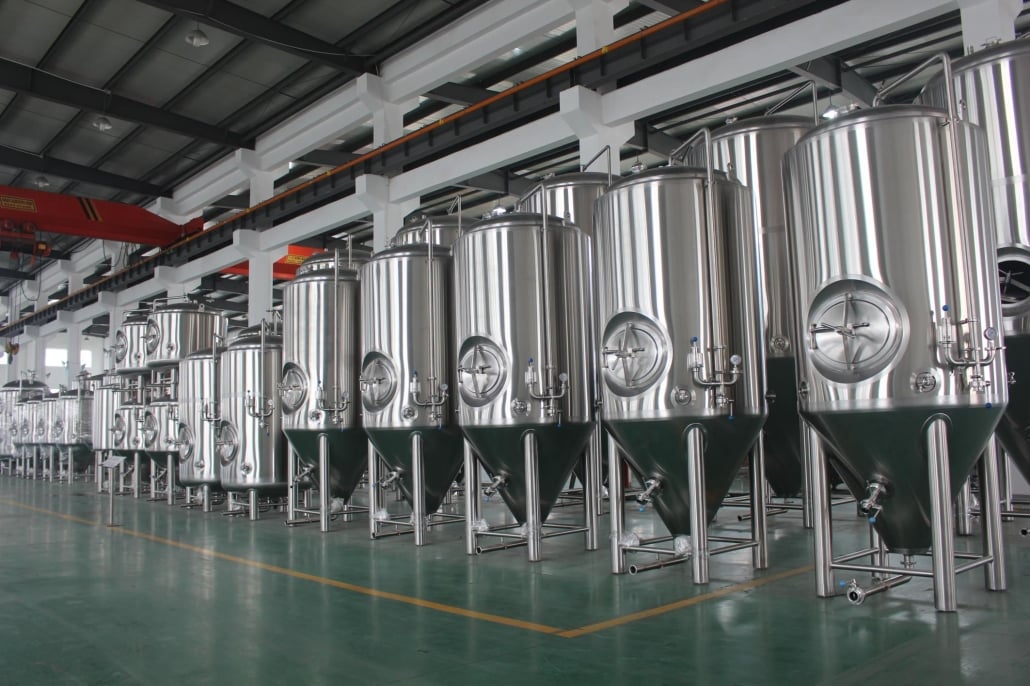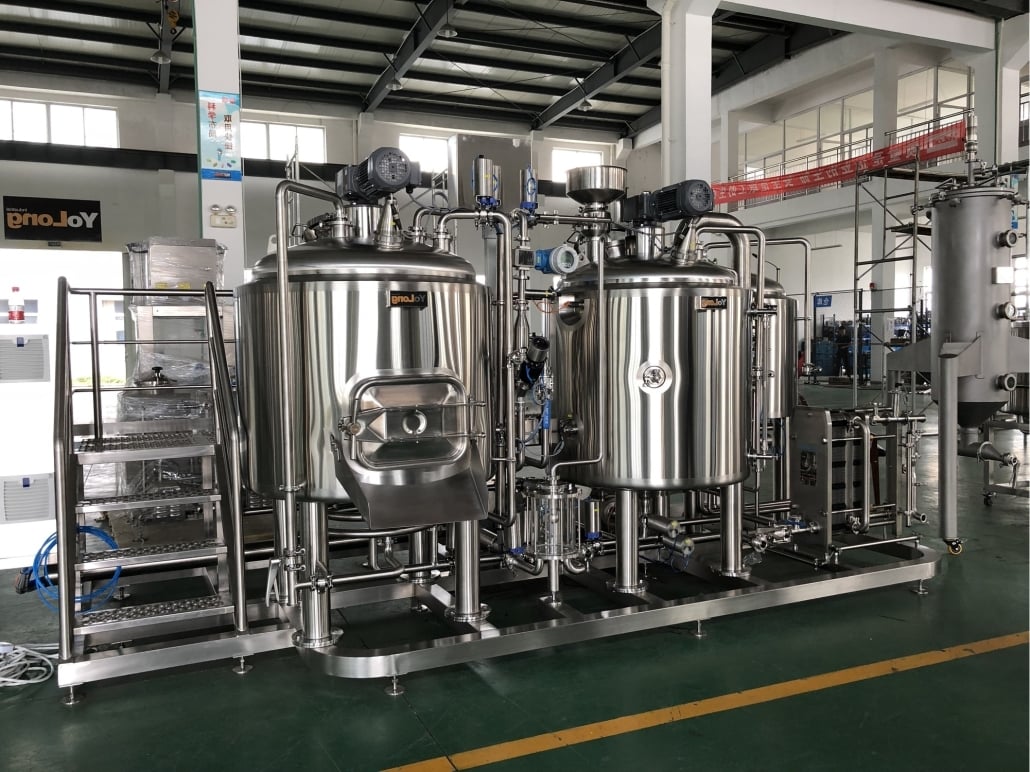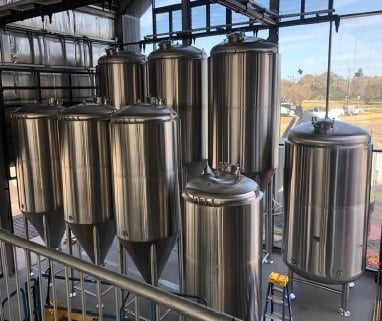Commercial Microbrewery Equipment
A commercial microbrewery equipment requires specialized equipment to produce craft beer on a small to medium scale for sale. The key considerations when choosing microbrewery equipment include:
Brewing System Capacity: Batch sizes of 3-15 barrels (BBLs)
Degree of Automation: Manual, semi-automatic, or fully automated systems
Budget: Equipment costs ranging from $50,000 to $500,000+
Production Goals: Focus on core beers vs experimentation with specialty recipes
Space Requirements: Floorspace, height, layout to accommodate equipment
Quality and Durability: Stainless steel construction for food-grade production and longevity
Customization: Flexibility to get equipment customized to specific needs
Installation and Maintenance: Service contracts for setup, calibration, cleaning etc.

Commercial Microbrewery Equipment Guide
The essential equipment in a microbrewery fall into four main categories:
| Equipment Type | Functions |
|---|---|
| Mashing Equipment | Mix milled grains with hot water to extract sugars |
| Boiling Kettle | Boil mash extract with hops to produce wort |
| Fermentation Tanks | Ferment wort with yeast to produce beer |
| Serving Tanks | Store, carbonate, serve finished beer |
Additional equipment like mills, filters, bottling lines may be needed depending on business model.
Overview of the Brewing Process
The typical brewing process involves:
- Milling malted barley and other grains
- Mixing crushed grains with hot water in the mash tun
- Separating sweet wort from spent grains
- Boiling wort with hops in the brewkettle
- Cooling boiled wort and transferring to fermenter
- Adding yeast for fermentation
- Maturing beer in serving tanks
- Packaging finished beer into kegs, bottles or cans
Types of Commercial Microbrewery Equipment
| Equipment | Details |
|---|---|
| Mash Tun/Lauter Tun | Stainless steel vessel to mash grains. Sizes from 3-15 BBL. Insulated, steam-jacketed. |
| Brew Kettles | Stainless steel vessel to boil wort. Direct or indirect heat. Sizes from 3-15 BBL. |
| Fermentation Tanks | Stainless steel tanks. Cone bottom preferred. CCT: Conditioning & Carbonating. |
| Serving Tanks | Brite tanks with glycol cooling jackets. Pressure rated for carbonation & dispensing. |
| Mill | Roller or hammer mill to crush grains. |
| Filter | Plate & frame to remove solids before fermentation. |
Sizing Commercial Microbrewery Equipment
Choosing the right equipment sizes for a commercial microbrewery depends on business targets in terms of:
| Parameter | Typical Range |
|---|---|
| Batch Size | 3-15 barrels (BBL) |
| Annual Production | 500-5000 BBLs |
| Fermentation Tanks | 2-4 times number of BBL |
| Serving Tanks | 50-100% of fermentation capacity |
| Brewhouse Size | 20-100% of fermentation volume |
Design & Layout of Commercial Microbrewery
Efficient layout and workflow design ensures:
- Logical process flow from raw materials to packaged product
- Easy movement pathways between equipment
- Room for expansion with additional tanks
- Compliance with plumbing, wiring, safety, building codes
Both linear layouts and concentric designs can achieve these goals with the right floorplan and equipment sizes customized to available space.
Customization of Commercial Microbrewery Equipment
It helps to find a supplier-installer who provides:
Customization Options
| Customization Requirements | Description |
|---|---|
| Type of Brewing Equipment | Choose the type of brewing equipment to be customized, such as fermentation tanks, distillation units, cooling systems, etc. |
| Equipment Specifications | Specify the capacity, dimensions, and performance requirements of the equipment. |
| Material Options | Select the materials to be used for manufacturing the equipment, such as stainless steel, copper, etc. |
| Heating and Cooling Method | Determine the type of heating and cooling systems, such as electric heating, steam heating, cooling chambers, etc. |
| Control System | Choose the control system, including the level of automation and monitoring options. |
| Equipment Accessories and Options | Add any additional accessories or options, such as agitators, filters, storage tanks, etc. |
| Exterior Customization | Specify exterior customization options, such as color, logos, or decorations. |
| Safety and Compliance Requirements | Specify the safety standards and regulations that the equipment needs to comply with. |
| Production Capacity Requirements | Determine the equipment’s production capacity per hour/day. |
| Delivery and Installation Services | Determine whether manufacturer-provided delivery and installation services are needed. |
| Budget and Time Requirements | Specify the budget range and delivery schedule. |
Suppliers & Price Range of Microbrewery Equipment
| Equipment | Key Suppliers | Price Range |
|---|---|---|
| Mash Tun | Rolec, Psycho Brew, Ss Brewtech | $8,000 – $60,000 |
| Brew Kettle | Rolec, Psycho Brew, Ss Brewtech | $10,000 – $100,000 |
| Fermentation Tanks | Rolec, Psycho Brew, Ss Brewtech | $3,000 – $15,000 each |
| Serving Tanks | Rolec, Psycho Brew, Ss Brewtech | $3,000 – $10,000 each |
| Brewhouse System | Specific Systems, Psycho Brew, Premier Stainless | $50,000 – $500,000+ |
| Filters | Meura, GEA | $10,000 to $100,000 |
| Mills | Schmidling, Monster Mills, Cereal Killer | $1,000 – $7,000 |
Installation, Operation & Maintenance
Proper installation, operation and maintenance ensures efficiency, consistency and longevity.
| Activity | Details |
|---|---|
| Installation | Performed by equipment supplier or contracting brewer. Includes assembly, calibrating sensors, wiring, plumbing, testing. |
| Operation | Standard operating procedures and logs for each batch. Monitoring CIP and fermentation. Safety checks and risk management. |
| Maintenance | Preventative maintenance as per manuals. Annual servicing contracts. Recordkeeping. |
How to Select a Reliable Microbrewery Equipment Supplier
| Criteria | Best Practices |
|---|---|
| Track Record | Years in business. Number of systems installed. Brewery customer references. |
| Offerings | Range of equipment sizes and configurations. Customization services. |
| Quality | Use of food-grade stainless steel. Welding standards. Attention to detail. |
| Support | Installation, testing, maintenance, and repair services. Availability of manuals, parts, consumables. |
| Customer Service | Responsiveness to inquiries. Flexibility to modify orders. Post-sale technical support. |
Pros, Cons & Limitations of Commercial Microbrewery Equipment
| Considerations | Pros | Cons |
|---|---|---|
| Manual vs Automated | Lower upfront cost More hands-on control | Labor intensive Less consistency |
| New vs Used | Purpose-built Warranty support | Higher price tag Limited inventory |
| Turnkey Systems | All equipment matched and sized Single supplier accountability | Less customization flexibility Higher cost |
| Volume Flexibility | Difficult to accommodate very large or small batch sizes | Fixed equipment sizes constrain output scalability |

FAQ
What volume of beer can a 3-barrel brewhouse produce annually?
- A 3-barrel brewhouse can produce 500-1000 barrels annually running 1-2 batches per day. Actual output depends on fermentation tank capacity and packaging line throughput as well.
How much space is needed for a 7-barrel microbrewery?
- Around 2500-3000 sq ft is recommended for a 7 BBL microbrewery including the brewhouse, fermentation room, dry storage, serving tanks, and packaging area. The specific layout and footprint depends on the equipment configuration.
What does a basic 3-barrel startup brewery cost?
- The brewhouse and fermentation equipment for a basic 3 BBL microbrewery would cost $80,000 to $150,000. Additional costs include building, plumbing, electrical, safety systems, licensing, labour and packaging equipment.
Should I buy new or used microbrewery equipment?
- Both options have tradeoffs. Buying new purpose-built equipment allows customization but costs more. Used equipment saves money upfront but may need repairs or replacement sooner. Evaluate quality, warranty and included services carefully when deciding.
How are microbrewery equipment costs broken down?
- Typical microbrewery equipment expenses include 30-50% on the brewhouse system, 30% on fermentation tanks, 10% on serving tanks, 5% on the grain milling and wort filter, and the remainder on small parts, plumbing, automation etc.













